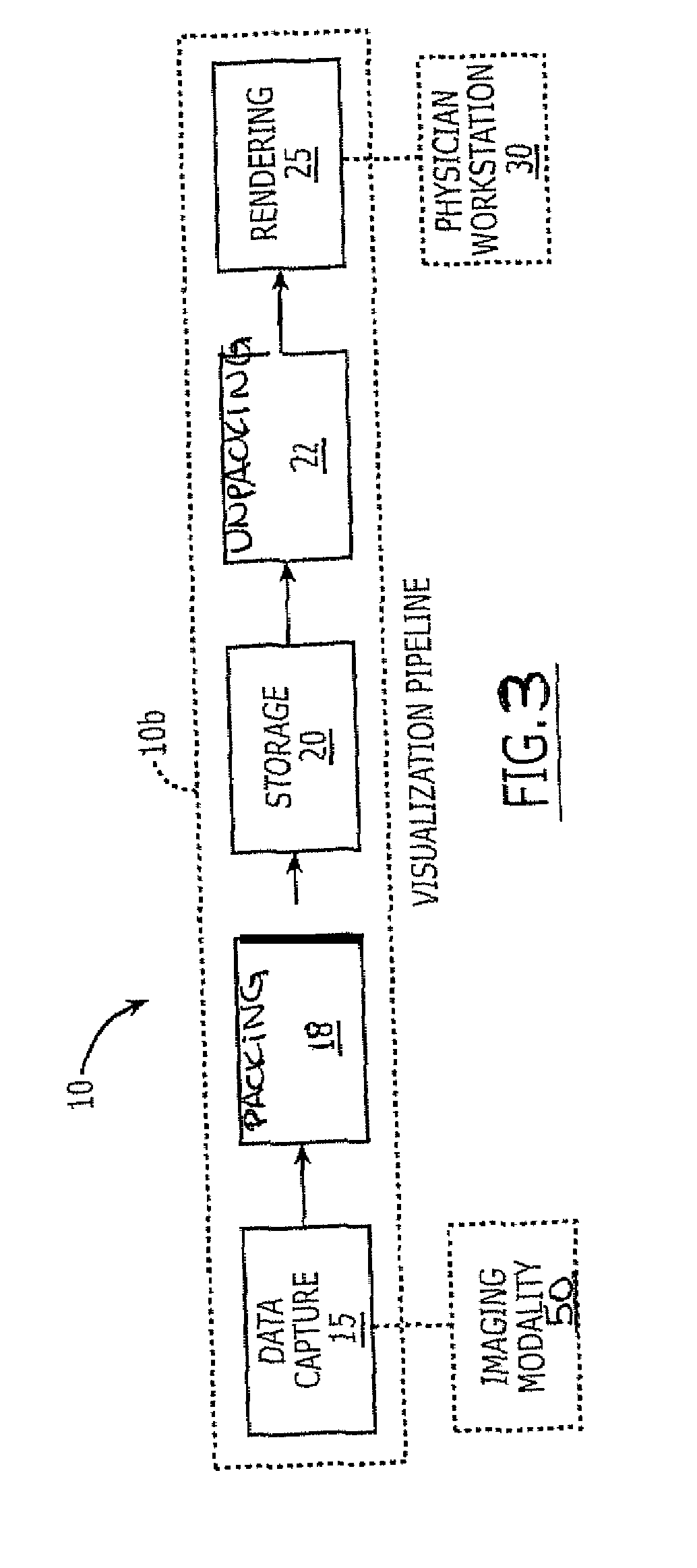Automated histogram characterization of data sets for image visualization using alpha-histograms
a technology of image visualization and histogram, applied in the field of histogram analysis, can solve the problems of time-consuming manual adjustment of dvr using conventional transfer functions, unable to achieve widespread use of dvr for non-research medical imaging, and difficulty in slice-by-slice viewing of medical data
- Summary
- Abstract
- Description
- Claims
- Application Information
AI Technical Summary
Problems solved by technology
Method used
Image
Examples
examples
[0133]The test results are divided into two parts. First, synthetic data sets are used to explore the properties of the α-histogram and its variations. These experiences are then applied to a clinical TF adaptation problem, in which tissue detection is a key component. The results concern a standard α-histogram based on 83 blocks, unless stated otherwise.
Synthetic Data Sets
[0134]Tests have been performed on two synthetic data sets with controllable characteristics. As shown in FIGS. 10A and 10J, the first data set is a tube spiraling around a torus, intended to imitate a vessel, designed not to coincide with a Cartesian block structure. Since a block subdivision is performed in the standard α-histogram, the spiral shape is designed not to be aligned with any Cartesian grid. The radius, ρ, sets the width of the “vessel”. The distributions of voxel values have been chosen to mimic real angiography data sets. The vessel has a Gaussian distribution (μ=100, σ=20). The background has a Ga...
PUM
 Login to View More
Login to View More Abstract
Description
Claims
Application Information
 Login to View More
Login to View More - R&D
- Intellectual Property
- Life Sciences
- Materials
- Tech Scout
- Unparalleled Data Quality
- Higher Quality Content
- 60% Fewer Hallucinations
Browse by: Latest US Patents, China's latest patents, Technical Efficacy Thesaurus, Application Domain, Technology Topic, Popular Technical Reports.
© 2025 PatSnap. All rights reserved.Legal|Privacy policy|Modern Slavery Act Transparency Statement|Sitemap|About US| Contact US: help@patsnap.com



